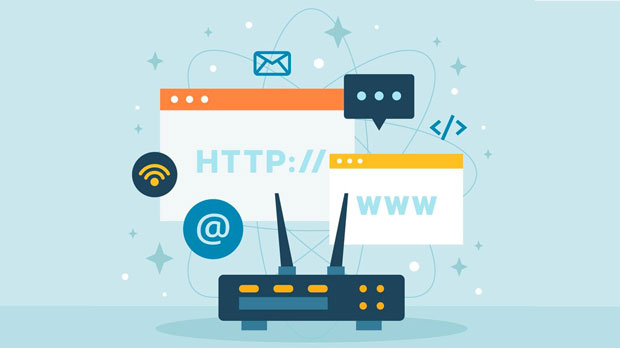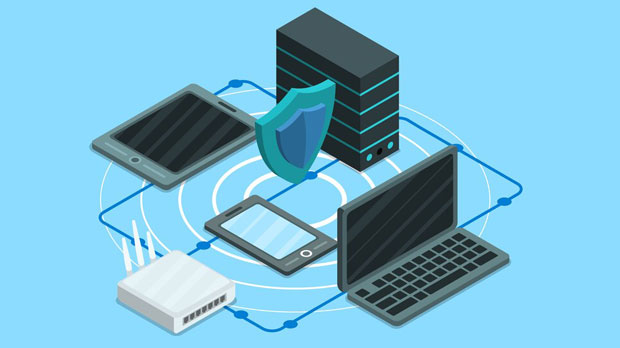In today’s digital age, proxy servers play an essential role in ensuring online privacy and security. They act as intermediaries between clients and websites, allowing users to hide their IP addresses and mask their online activity. HTTPS encryption, known for securing the transmission of sensitive data, adds another layer of protection in the communication between proxies and their clients. Two widely used proxy servers, usaproxy and PYPROXY, differ in terms of performance when used under HTTPS encryption. Understanding the performance differences between them is vital for businesses and individuals who rely on proxy servers for various purposes, such as web scraping, data protection, or accessing geo-restricted content. This article delves into a detailed comparison of usaproxy and pyproxy under HTTPS encryption, considering factors such as connection speed, reliability, resource usage, and security capabilities. Introduction to HTTPS and ProxiesBefore diving into the performance differences between usaproxy and pyproxy, it is important to first understand the role of HTTPS and how proxies interact with it. HTTPS (Hypertext Transfer Protocol Secure) is an extension of HTTP that incorporates SSL/TLS encryption to secure the communication between a web browser and a server. This encryption ensures that data transmitted over the internet remains private and protected from potential threats like man-in-the-middle attacks.Proxies, in turn, route user requests through their own servers, acting as intermediaries between the user and the internet. When combined with HTTPS, a proxy can secure the connection while preserving anonymity and encrypting the data between the user and the target website.Overview of usaproxy and pyproxyusaproxy is a Python-based proxy server known for its flexibility and ease of integration with various applications. It is open-source, highly customizable, and often chosen by developers who need a lightweight and simple proxy solution. usaproxy can handle both HTTP and HTTPS requests and is frequently used for tasks like web scraping, data mining, and ensuring anonymity in online activities.On the other hand, pyproxy is a proxy service designed to provide high-speed access to various websites while offering strong security features, including HTTPS encryption. It is known for its robust infrastructure, reliability, and ability to handle large volumes of traffic with minimal latency. pyproxy is typically used for bypassing geo-restrictions, accessing content securely, and ensuring a stable browsing experience for users.Factors Influencing Performance under HTTPS EncryptionSeveral factors influence the performance of a proxy server when HTTPS encryption is involved. These include connection speed, encryption overhead, server reliability, and resource usage. A proxy server that can handle encrypted connections efficiently will provide users with a smooth experience, while one that struggles with encryption may result in slower connections and higher latency.Connection SpeedConnection speed is one of the most critical performance metrics for any proxy server. Under HTTPS encryption, the time required to establish a secure connection can add extra latency due to the SSL/TLS handshake process. This handshake involves exchanging encryption keys and establishing a secure communication channel, which can slow down the connection speed if not optimized.In terms of connection speed, pyproxy generally outperforms usaproxy. This is because pyproxy utilizes advanced optimization techniques, such as load balancing and distributed server networks, which minimize latency and enhance the speed of HTTPS connections. The infrastructure of pyproxy is designed to handle large volumes of encrypted traffic efficiently, making it ideal for users who need a fast and stable connection, especially for high-bandwidth applications like streaming or data-intensive tasks.usaproxy, while flexible and highly customizable, tends to experience higher latency under HTTPS due to its reliance on simpler infrastructure. It does not have the same level of optimization as pyproxy, which may result in slower connection speeds, especially when handling multiple simultaneous encrypted requests.Encryption OverheadEncryption overhead refers to the additional processing required to encrypt and decrypt data as it passes through the proxy server. The more resource-intensive the encryption process, the higher the impact on performance, especially when handling large volumes of data.pyproxy excels in this area due to its optimized encryption algorithms and robust server infrastructure. It is designed to handle heavy traffic and encrypted data with minimal performance degradation. The infrastructure ensures that encryption overhead is distributed across multiple servers, which helps mitigate any performance loss.usaproxy, on the other hand, is relatively less optimized for handling encryption overhead. Since it is an open-source solution, developers often have to manually tweak configurations to optimize performance. While it can work well for small-scale projects, it may struggle under heavy loads or with continuous HTTPS traffic, leading to increased latency and slower response times.Server Reliability and StabilityServer reliability is another important factor in determining proxy performance. Proxies must maintain a stable connection to ensure that users experience minimal downtime and interruptions. Under HTTPS encryption, a reliable server connection is crucial to prevent dropped connections and ensure the integrity of encrypted data.pyproxy has a more established infrastructure, with multiple servers distributed across different regions. This distributed setup ensures that if one server encounters issues, another can take over, reducing the likelihood of downtime. Additionally, pyproxy’s servers are optimized for handling encrypted traffic, ensuring stable and reliable connections even under heavy load.usaproxy, due to its open-source nature, lacks the same level of reliability. While it can be configured to work effectively, it does not come with the same level of built-in redundancy and failover mechanisms that pyproxy offers. As a result, users may experience occasional downtime or slow response times, particularly if the server experiences heavy traffic or encounters technical issues.Resource Usage and ScalabilityThe ability of a proxy server to handle a growing number of requests without significant degradation in performance is another key factor to consider. This is especially important for businesses and developers who need proxies that can scale as their needs grow.pyproxy is designed with scalability in mind. Its infrastructure can handle large-scale deployments and can automatically adjust to accommodate increased demand. This makes it an excellent choice for businesses that require consistent performance, even as traffic volumes increase. The resource usage of pyproxy is well-optimized, ensuring that the server does not become overloaded even under heavy use.usaproxy, while lightweight, may struggle with scalability. It is well-suited for smaller-scale operations but may require additional optimization or infrastructure improvements when handling large volumes of HTTPS traffic. Developers using usaproxy may need to implement custom solutions or deploy additional resources to ensure that performance remains stable as demand grows.Security CapabilitiesSecurity is one of the primary reasons users turn to proxies, especially when using HTTPS encryption. Both usaproxy and pyproxy support HTTPS, but their approaches to security differ.pyproxy provides robust security features, including advanced SSL/TLS encryption, DDoS protection, and data anonymization techniques. The infrastructure is built with security in mind, ensuring that user data is protected from potential threats throughout the connection.usaproxy, being open-source, offers a level of security but may require additional configuration to achieve the same level of protection as pyproxy. While usaproxy can be secure, it is up to the user or developer to ensure that the right security measures are in place. Without proper configuration, it may be more vulnerable to security threats, especially when handling sensitive data.ConclusionWhen comparing usaproxy and pyproxy under HTTPS encryption, it is clear that both have their strengths and weaknesses. pyproxy excels in performance, reliability, and scalability, making it a better choice for businesses and high-demand applications. Its infrastructure is optimized to handle encrypted traffic efficiently, ensuring faster speeds and more stable connections.usaproxy, on the other hand, offers flexibility and customization but may not be as reliable or efficient under HTTPS encryption. It is best suited for smaller-scale projects or developers who have the expertise to optimize the proxy for their needs.Ultimately, the choice between usaproxy and pyproxy depends on the specific requirements of the user, including factors such as connection speed, security, scalability, and resource usage. By understanding the performance differences, users can make an informed decision on which proxy server best suits their needs under HTTPS encryption.
Oct 15, 2025



































































